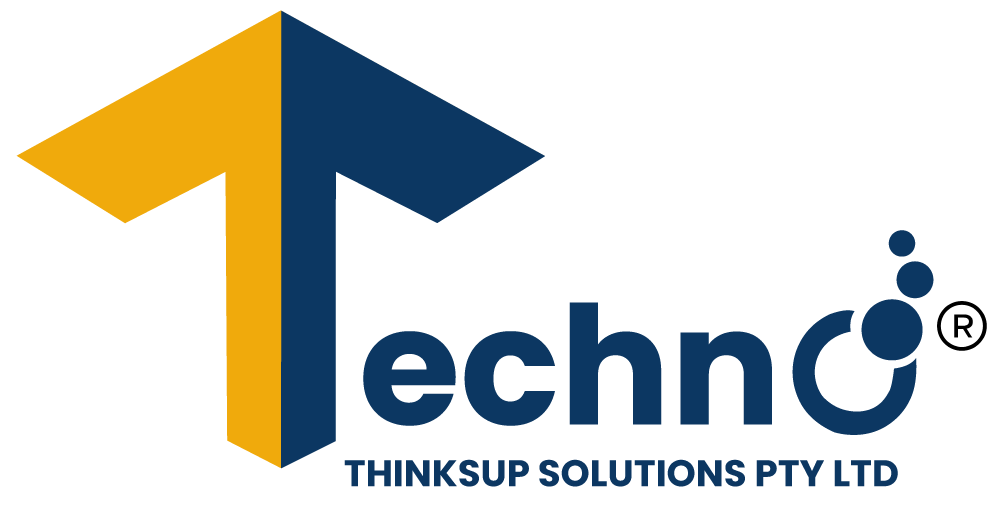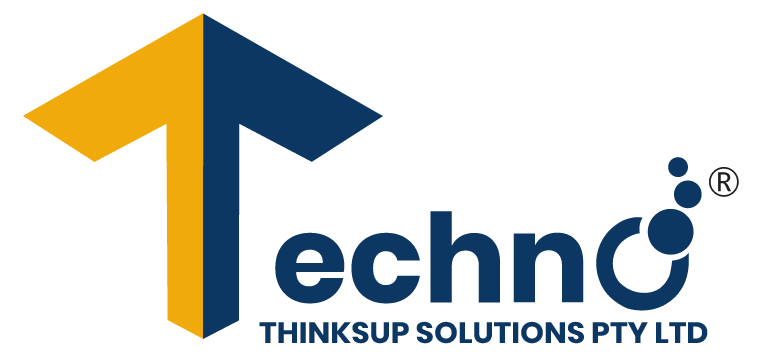Exploring the World of IoT App Development: Transforming Ideas into Smart Solutions
TechnothinksupRewamp June 7, 2024

In today’s fast-paced digital age, the Internet of Things (IoT) has emerged as a revolutionary force, reshaping industries and enhancing everyday lives. At the heart of this technological transformation lies IoT app development, empowering businesses and individuals to connect, interact, and innovate like never before. In this blog post, we delve into the exciting realm of IoT app development, exploring its potential and the key steps involved in bringing innovative ideas to life.
Understanding IoT App Development
IoT app development involves the creation of software applications that enable communication and interaction between connected devices, sensors, and systems. These applications serve as the interface through which users can monitor, control, and gather insights from IoT devices, facilitating seamless automation and data-driven decision-making.
The Power of Connected Devices
The proliferation of connected devices across various domains, including healthcare, manufacturing, agriculture, and smart homes, has paved the way for unprecedented possibilities. From smart thermostats that optimize energy consumption to wearable fitness trackers that monitor health metrics in real-time, IoT applications are revolutionizing industries and enhancing efficiency, productivity, and convenience.
Key Components of IoT App Development
Developing an IoT application involves several essential components, each playing a crucial role in the overall functionality and user experience:
- Hardware Integration: IoT apps often require integration with a diverse range of hardware devices and sensors. Whether it’s temperature sensors, motion detectors, or actuators, seamless integration is essential for enabling data collection and device control.
- Data Management: Effective data management lies at the core of IoT app development. From collecting and storing sensor data to analyzing and visualizing insights, robust data management capabilities ensure that users can derive actionable intelligence from the vast amounts of IoT-generated data.
- Connectivity Protocols: IoT devices communicate using various connectivity protocols such as Wi-Fi, Bluetooth, Zigbee, and LoRaWAN. Choosing the right protocol depends on factors such as range, power consumption, and data transfer speed, ensuring optimal performance and reliability.
- Security: With the proliferation of connected devices, ensuring the security of IoT applications is paramount. Implementing robust authentication, encryption, and access control mechanisms safeguards sensitive data and prevents unauthorized access and cyber threats.
- User Interface (UI) and Experience (UX): A user-friendly interface is essential for ensuring seamless interaction with IoT applications. Intuitive dashboards, customizable settings, and real-time notifications enhance the user experience, enabling users to effortlessly monitor and manage connected devices.
The IoT App Development Process
The development process for IoT applications typically follows a series of iterative steps:
- Ideation and Planning: Define the objectives, functionalities, and target users of the IoT application. Conduct market research and feasibility studies to identify potential challenges and opportunities.
- Prototyping and Design: Create wireframes and prototypes to visualize the application’s interface and user flow. Iterate on the design based on feedback and usability testing to ensure an intuitive and engaging user experience.
- Development: Develop the backend infrastructure, APIs, and frontend interfaces required for the IoT application. Implement features such as device connectivity, data management, and security protocols, adhering to best practices and industry standards.
- Testing and Quality Assurance: Conduct thorough testing to identify and rectify any bugs, errors, or performance issues. Test the application across different devices, platforms, and network conditions to ensure compatibility and reliability.
- Deployment and Maintenance: Deploy the IoT application to the intended environment, whether it’s cloud-based, on-premises, or hybrid. Monitor performance metrics, user feedback, and system updates to continuously optimize and maintain the application’s functionality and security.
Conclusion
In conclusion, IoT app development represents a transformative opportunity for businesses and individuals to harness the power of connected devices and drive innovation across various industries. By understanding the key components and development process involved, organizations can unlock new possibilities and deliver impactful solutions that enhance efficiency, productivity, and quality of life. Embrace the potential of IoT app development, and embark on a journey of digital transformation and technological advancement.

Harness the power of Amazon Web Services (AWS) to elevate your business operations. Here are just a few benefits:
Scalability: Easily scale your resources up or down based on demand. 📈
Cost-Effectiveness: Pay only for what you use, reducing overhead costs. 💰
Global Reach: Access AWS data centers worldwide for enhanced performance. 🌍
Security: Benefit from advanced security features to protect your data. 🔒
Flexibility: Choose from a wide range of services to fit your specific needs. 🔧
Ready to take your business to new heights? Let’s get started! 💪✨
#AWS #CloudComputing #BusinessGrowth #TechSolutions #Innovation #technothinksup

🌍Today, we celebrate the spirit of exploration and innovation! Just like Columbus set sail into the unknown, we’re here to navigate the ever-evolving world of technology to bring you cutting-edge solutions! 💻🌟
Join us on this exciting journey! Whether it's software development, IT consulting, or digital transformation, our team is ready to guide you every step of the way! 🛠️💡
Together, let’s chart new courses in tech! 🌊✨
#ColumbusDay #Innovation #TechTrends #Explore #DigitalTransformation #Technothinksup #AdventureAwaits #FutureOfTech #Inspiration

🕊️✨ Wishing everyone a meaningful Yom Kippur from all of us at Technothinksup! 🌙🙏 This Day of Atonement is a time for reflection, forgiveness, and spiritual renewal.
Let’s take a moment to consider our actions over the past year and seek forgiveness from those we may have wronged. 🤝💔 It’s a powerful opportunity to strengthen our connections with ourselves and others. 🌱💪
May this day of fasting and contemplation bring peace, clarity, and healing to all. 🕊️💖
G'mar Chatima Tova! 🍞✡️
#YomKippur #DayOfAtonement #Reflection #Forgiveness #SpiritualRenewal #Community #Technothinksup

Creating a successful website requires careful planning and execution. Here are some essential tips:
✅ Do: Prioritize user experience for seamless navigation.
❌ Don’t: Overload your site with unnecessary features that confuse visitors.
✅ Do: Optimize for mobile devices to reach a wider audience.
❌ Don’t: Neglect SEO—ensure your site is discoverable!
By following these dos and don’ts, you can build a website that not only looks great but performs even better! 🚀
What other tips do you have? Share below! 👇💬
#WebDevelopment #DosAndDonts #WebsiteDesign #Technothinksup

🌟 Happy Labour Day from Technothinksup! 💪✨
Today, we celebrate the hard work and dedication of all those who contribute to our communities and industries. Your efforts drive innovation and progress!
Let’s take a moment to recognize and appreciate the value of every worker. Enjoy your well-deserved day off! 🎉🙌
#LabourDay #Workforce #Technothinksup

Australia's IT consulting industry is booming! 📈 With a projected annual growth of over 6% through 2025, businesses are prioritizing digital transformation to stay ahead of the curve. 🌐
From cloud migration to cybersecurity and data analytics, the demand for IT services is skyrocketing as companies future-proof their operations. 💻🔒
Stay informed and ahead of the game with Technothinksup Solutions Pty Ltd. Let's drive innovation together! 🚀
#ITConsulting #DigitalTransformation #CloudMigration #Cybersecurity #DataAnalytics #TechGrowth #AustraliaIT #Technothinksup #BusinessGrowth

🌟 Shana Tova from Technothinksup! 🍏🍯✨
As we celebrate Rosh Hashanah here in Australia, let’s take a moment to reflect on the past year and embrace new beginnings! 🎉💫 May this year bring sweet moments 🍯, fresh opportunities 🌱, and innovative ideas 💡 for all!
Join us in sharing your wishes and resolutions for the year ahead. Let’s make it a year filled with tech advancements and meaningful connections! 🤝💻
#RoshHashanah #ShanaTova #NewBeginnings #Technothinksup 🎊🍎🥳

🚀 Quick Tip: Boost Your Mobile App UX! 🚀
Want to keep users happy and engaged? Simplifying navigation is key!
🔑 How to do it: Use clear, concise menus, keep icons consistent for common actions, and add a search feature to help users find content quickly. A smooth user experience makes all the difference!
What’s your go-to tip for improving mobile app UX? Share your thoughts with us below! 👇
#UXDesign #AppDevelopment #MobileUX #UserExperience #TechTips #SimplifyNavigation #AppDesign #Technothinksup

❤️🌍 Celebrate World Heart Day with Technothinksup Solutions Pty Ltd! 🌟💪
Today, we focus on the importance of heart health and well-being. Let’s commit to making healthy choices and supporting each other for a stronger, healthier future!
Here’s to a heart-healthy life! 💬❤️
#WorldHeartDay #HeartHealth #HealthyLiving #TechSolutions #Technothinksup #Wellness #HealthyHeart #CommunitySupport #HeartCare #LiveWell #HealthMatters

🌍✈️ Celebrate World Tourism Day with Technothinksup Solutions Pty Ltd! 🌟🏖️
Today, we honor the power of travel and its role in connecting cultures and boosting economies. Whether you're exploring new destinations or sharing your local wonders, let's embrace the joy of discovery and adventure!
Here’s to a world full of amazing experiences! 💬🌏
#WorldTourismDay #ExploreTheWorld #TravelAndDiscover #CulturalConnections #TechSolutions #AdventureAwaits #TourismMagic #Technothinksup #GlobalJourneys #TravelInspiration #Wanderlust #DigitalInnovation #TravelCommunity #TourismImpact #DiscoverTogether




 Web Development
Web Development
 App Development
App Development
 IT Consulation
IT Consulation
 UI/UX Design
UI/UX Design
 Ecommerce
Ecommerce
 Content Marketing
Content Marketing
 DevOps Services
DevOps Services
 Software Development
Software Development
 Digital Marketing
Digital Marketing
 Social Media Marketing
Social Media Marketing
 Search Engine Optimization
Search Engine Optimization
 AWS Managed Services
AWS Managed Services
 QA And Software Testing
QA And Software Testing
 Local Search Optimization
Local Search Optimization
 Technology Outsourcing
Technology Outsourcing
 Metaverse Development
Metaverse Development
 Web 3 Consulting
Web 3 Consulting
 IoT App Development
IoT App Development
 VR App Development
VR App Development
 IT Staff Augmentation
IT Staff Augmentation
 Startup App Development
Startup App Development
 Saas App Development
Saas App Development
 Low Code Development
Low Code Development
 Product Engineering
Services
Product Engineering
Services
 Custom CRM Development
Custom CRM Development
 Offshore Development
Center (ODC)
Offshore Development
Center (ODC)
 Machine Learning
Development
Machine Learning
Development
 Blockchain App Development
Blockchain App Development
 Blockchain In Identity Management
Blockchain In Identity Management
 Artificial Intelligence
Development
Artificial Intelligence
Development
 Dedicated Development Team
Dedicated Development Team
 Strategic Mobile
Consulting
Strategic Mobile
Consulting
 Scrum
Scrum
 DevOps
DevOps
 Lean
Lean
 Kanban
Kanban
 V-Model
V-Model
 Waterfall Model
Waterfall Model
 Design Thinking
Design Thinking
 Agile Development
Agile Development
 Prototype Methodology
Prototype Methodology
 Rapid Application Development (RAD)
Rapid Application Development (RAD)
 Feature-Driven
Development (FDD)
Feature-Driven
Development (FDD)
 Dynamic Systems
Development Method (DSDM)
Dynamic Systems
Development Method (DSDM)





